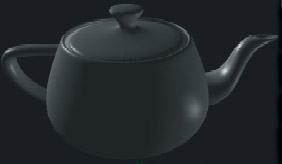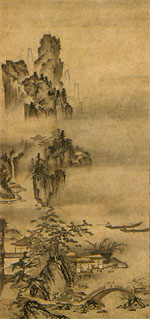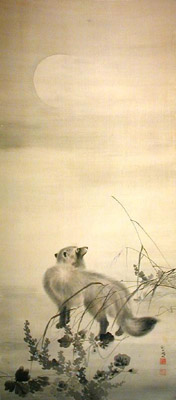
|
Back |
 Home
Home
|
|
Understanding NPR
"The freedom to encode an impression rather than heing forced to follow physical constraints is considered the key to conveying information." - Non-Photorealistic Computer Graphics |
|
"Sketchy'' rendering styles are essential because they often enable users to focus on the essence of a problem rather than unimportant details. Non-photorealistic rendering draws a user's attention away from imperfections in the approximate scenes she creates while also increasing the scene's apparent complexity and ambiguity. PsychologyHuman perception and visual interpretation is a vital factor in understanding the usage of NPR. Computer graphics, traditionally was biased towards photorealism : a field essentially concerned with rendering images as "realistically" as possible via the integration of physics and rendering algorithms. Times are changing and in stark contrast, NPR algorithms survive on a comparitively looser philosophy: ranging from artistic preference to the applied functionality of a given image. Computers are often used for precise rendering, computer-aided-design, and three-dimensional rendering, but, as evidenced in the art world, high precision isn't always the best way to convey ideas. Sometimes a quick sketch needs to look hasty to signify that the idea is fresh from the mind. A polished rendering gives a sense of finality which can be misleading or even frightening in some situations where an immediate solution has not been sought. The "sketched" look is instantly recognized as being an indication of intent with room for change and possible errors.
Consider the example given above, the PR image of the teapot and the NPR version of the same teapot on the right. While the PR image is defined by the singular principle of appearing as realistic or "life-like" as technologically possible, the NPR image uses only one of a virtually infinite variety of NPR styles. The visual flexibility of NPR holds inherent, though still underdefined, potential to influence viewer responses in a variety of manners. As the modern world develops and utilizes IT applications for work, communication, advertising and play at an exponential rate, the subsequent demand for psychological research into human computer interaction has emerged. Specifically, the coupling of NPR and psychological tests may reveal response variables encompassing aspects of emotion, attention and memory.
Halper's Interactive Rendering Task One of the most fundamental actions of the mind consists of selecting what to pay attention to and what to ignore. You usually make such decisions automatically and unconsciously. eg: plus sign with a frame and without a frame. Even when one sign in given a square frame, the sign (and not the space surrounding it) remains the meaningful part of this simple stimulus. Gestalt psychologists have termed the relationship between a figure and its background the figure/ground relationship. In art, it is often referred to as positive and negative space. The greater the visual information in a given image or scene, as in a photorealistic environment, the greater the probability for figure-ground-segregation errors. In perception, figures are consistently marked by certain qualities. A figure is perceptually bright: it seems to have more intensity than the background, and it appears to stand out from it. A figure also has the quality of appearing as a thing that is on top of the background. The ground also has specific characteristics: it seems to be under the figure, to lack a particular form, and to be continuous (that is, it is not seen as stopping at the edge of the figure, but as continuing behind the figure). In addition, a figure suggests meaning, while a ground seems relatively meaningless. This differentiation of figure from ground is essential to perception, and it takes place within all of your senses. Figure/ground relationships do not exist in the outside world; they are created by the mind. Visual element groupingAnother way the brain forms figures is by grouping aspects of the stimulus into meaningful patterns. Complex groupings occur in high-contrast photography, which reduces an image to black and white, eliminating the contours and the shades of gray you would ordinarily expect to see. At first glance, the image may look like a senseless arrangement of black and white fragments. Recognition usually begins when one part of the picture spontaneously appears meaningful. Once one part of the figure is identified, the rest of the pieces seem to fall in place. This is partly a result of what Gestaltists called good continuation: we tend to perceive separate lines or shapes as parts of a larger whole when the visual transitions from one element to another appear smooth (not abrubt). Good continuation, however, depends on familiarity; until the shapes can be perceived as representing something familiar, they remain abstract and meaningless. That is if the different parts of an object share the same qualities - in this instance, rendering style, it is easier for our brain to bind these parts together as a whole object or field of related objects.
Japanese Zen Buddhist painters apply these principles by using minimal brush strokes to convey a meaningful image. They are usually composed of visual fragments-brush strokes that by themselves are abstract and meaningless. By grouping and filling in, the mind of the viewer actively combines them into a definite image. |
In a nut-shell - Site Map
(Move cursor over the site-map to bring up info-panels. The large boxes are links.)
| Why use NPR? |

|
Non-Photorealistic Rendering |
|
Aesthetics, Impact |






